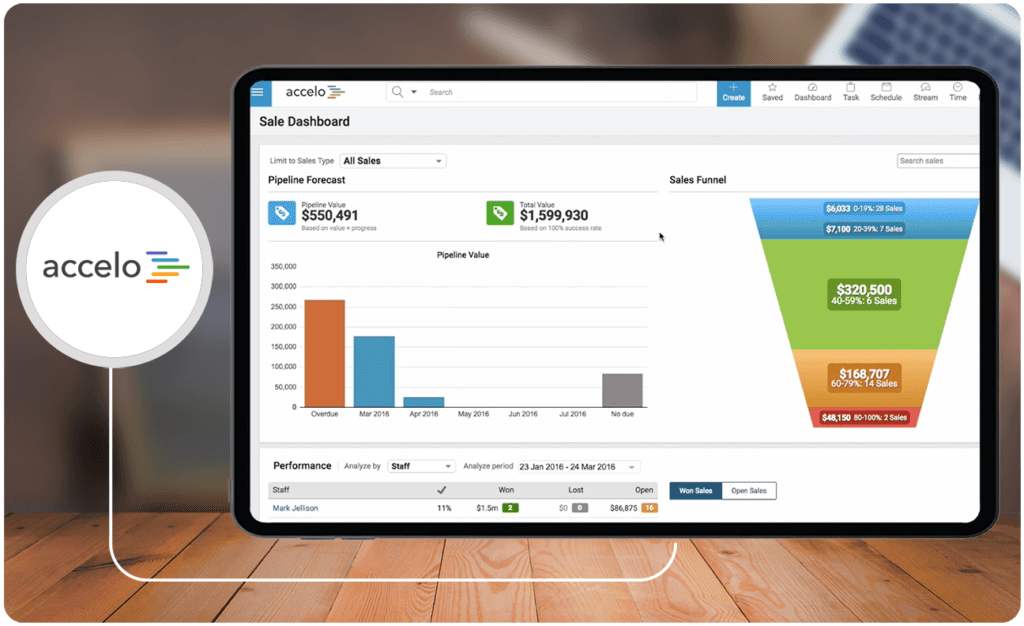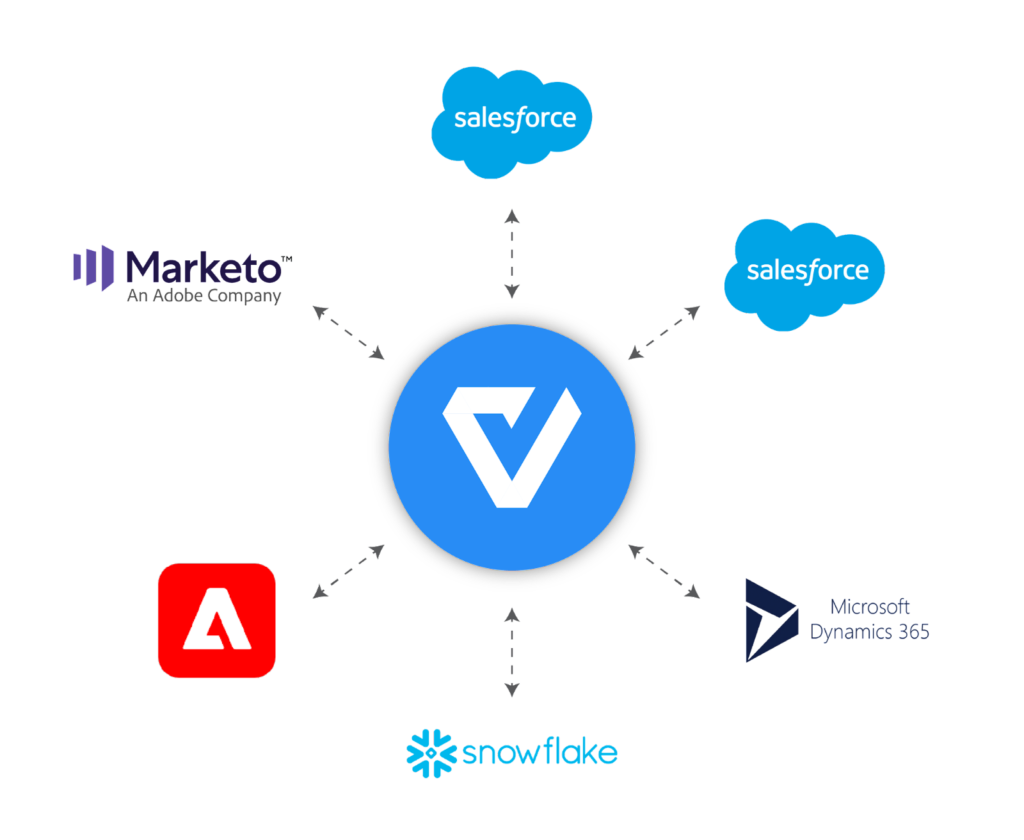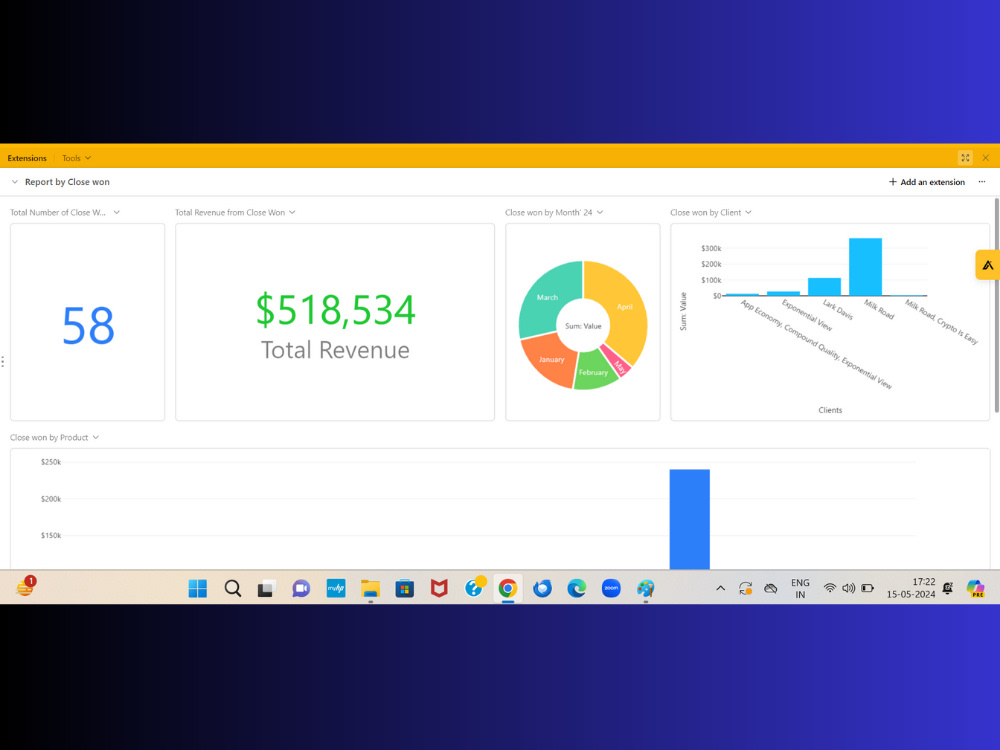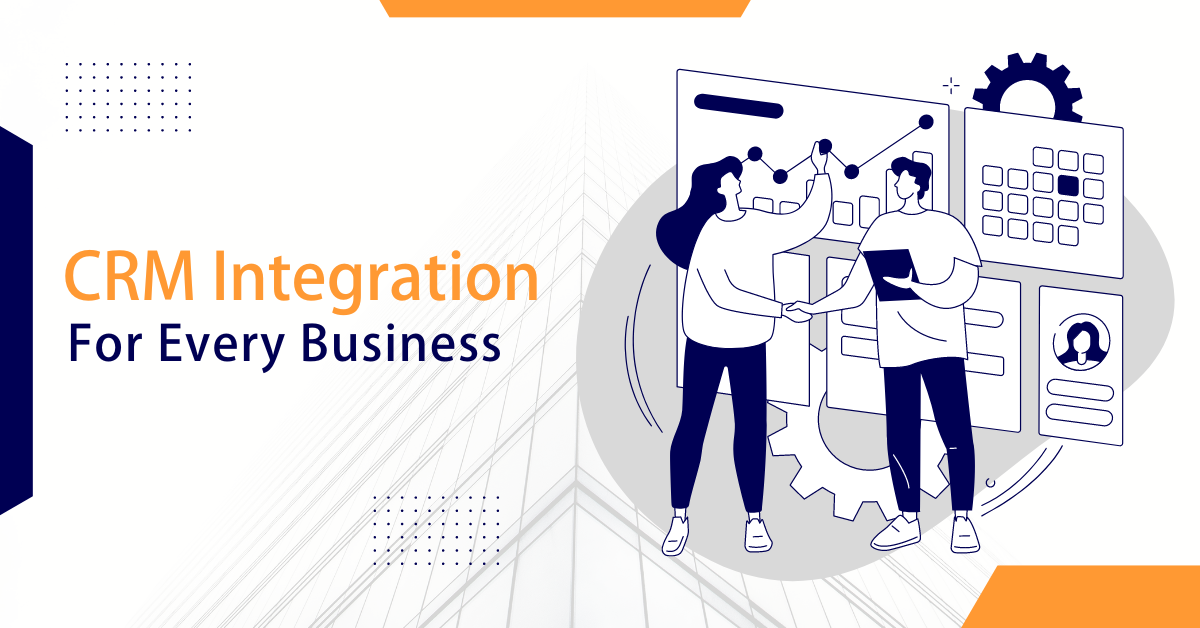
Unlocking Efficiency: The Power of CRM Integration with Accelo
In the dynamic world of project-based businesses, staying organized and efficient is not just a goal; it’s a survival skill. The right tools can make all the difference, and that’s where Customer Relationship Management (CRM) systems and project management software like Accelo come into play. But simply having these tools isn’t enough. The true magic happens when they work together seamlessly. This is where the power of CRM integration with Accelo truly shines. It’s about creating a unified ecosystem where data flows freely, tasks are automated, and your team can focus on what matters most: delivering exceptional results and building lasting client relationships.
This article delves deep into the world of CRM integration with Accelo. We’ll explore the ‘why’ and ‘how’ of this powerful combination, examining the benefits, best practices, and practical steps you can take to implement a successful integration. Whether you’re a seasoned project manager or just starting out, this guide will provide you with the knowledge and insights you need to optimize your workflow and achieve peak performance.
Understanding the Core: CRM and Accelo
What is a CRM?
At its heart, a CRM is a system designed to manage and analyze customer interactions and data throughout the customer lifecycle. It’s a central repository for all things customer-related, from initial contact to ongoing support. A good CRM helps businesses:
- Organize and manage customer data
- Improve customer communication and engagement
- Automate sales and marketing processes
- Track sales performance and identify opportunities
- Enhance customer service and support
Popular CRM platforms include Salesforce, HubSpot, Zoho CRM, and many others, each offering a range of features tailored to different business needs.
What is Accelo?
Accelo is a comprehensive project management and professional services automation (PSA) platform. It’s specifically designed for businesses that deliver projects, such as agencies, consultants, and IT service providers. Accelo helps these businesses:
- Manage projects from start to finish
- Track time and expenses
- Automate billing and invoicing
- Manage client communication
- Improve project profitability
Accelo’s strength lies in its ability to streamline the entire project lifecycle, from lead capture to final delivery and payment.
The Synergy: Why Integrate CRM with Accelo?
The benefits of integrating your CRM with Accelo are numerous and far-reaching. It’s about creating a synergistic relationship between your customer-facing and project-delivery functions. Here’s why this integration is a game-changer:
Enhanced Data Visibility and Accuracy
Imagine a world where customer data isn’t siloed in one system and project information in another. Integration brings these worlds together. When your CRM and Accelo are connected, customer data (contact details, company information, past interactions) is automatically synchronized between the two platforms. This eliminates the need for manual data entry, reducing the risk of errors and ensuring everyone has access to the most up-to-date information.
Streamlined Workflows and Automation
Integration allows you to automate many time-consuming tasks. For example, when a new lead is created in your CRM, the integration can automatically create a corresponding project in Accelo. When a deal is closed, a project can be automatically initiated, including the creation of tasks, assignments, and deadlines. This automation frees up your team to focus on strategic initiatives and client work.
Improved Collaboration and Communication
Integration fosters better collaboration between sales, marketing, project management, and client service teams. By having a shared view of the customer and project information, everyone can stay informed and aligned. This leads to more effective communication, fewer misunderstandings, and a better overall client experience.
Increased Efficiency and Productivity
By automating tasks, reducing data entry, and improving communication, integration significantly boosts efficiency and productivity. Your team can spend less time on administrative tasks and more time on revenue-generating activities. This translates into faster project completion times, improved profitability, and a higher return on investment.
Better Client Relationships
When you have a complete view of your clients and their projects, you can provide better service and build stronger relationships. You can anticipate their needs, proactively address their concerns, and personalize your interactions. This leads to increased customer satisfaction, loyalty, and ultimately, more business.
Getting Started: Steps to Integrate CRM with Accelo
The integration process can vary depending on the specific CRM you use, but the general steps are usually similar. Here’s a step-by-step guide to help you get started:
1. Choose the Right CRM
If you haven’t already, select a CRM that meets your business needs. Consider factors like features, pricing, scalability, and integration capabilities. Research the available integrations with Accelo to ensure compatibility and ease of setup. Some popular CRM choices include HubSpot, Salesforce, and Zoho CRM.
2. Evaluate Your Accelo Setup
Ensure that your Accelo account is properly configured. Define your project types, task templates, billing rates, and other settings. This will make the integration process smoother and ensure that data is mapped correctly between the two systems.
3. Choose an Integration Method
There are several ways to integrate your CRM with Accelo. The best option depends on your technical expertise, budget, and the complexity of your needs:
- Native Integrations: Some CRMs and Accelo offer native integrations, which are pre-built and often the easiest to set up. These integrations typically provide a seamless and user-friendly experience. Check Accelo’s marketplace or your CRM’s app store to see if a native integration is available.
- Third-Party Integration Platforms: Platforms like Zapier, Make (formerly Integromat), and Tray.io provide a no-code/low-code approach to integration. They allow you to connect various apps and automate workflows without writing any code. This is a good option if a native integration isn’t available or if you need more flexibility.
- Custom Integrations: If you have specific requirements that aren’t met by native integrations or third-party platforms, you can develop a custom integration using APIs (Application Programming Interfaces). This option requires technical expertise but offers the greatest level of control and customization.
4. Connect the Systems
Follow the instructions provided by your chosen integration method to connect your CRM and Accelo accounts. This typically involves entering your login credentials and authorizing the integration to access data in both systems.
5. Map the Data Fields
This is a crucial step. You need to map the data fields between your CRM and Accelo to ensure that information is synchronized correctly. For example, you’ll need to map the ‘Company Name’ field in your CRM to the ‘Client’ field in Accelo. Carefully review all the fields and ensure that they are mapped appropriately. You may also need to configure custom fields to store specific data that is unique to your business.
6. Configure Automation Rules
Once the systems are connected and the data fields are mapped, you can start configuring automation rules. This is where you define the triggers and actions that will automate your workflows. For example, you might set up a rule to automatically create a new project in Accelo when a deal is closed in your CRM. Experiment with different rules to optimize your workflow and reduce manual tasks.
7. Test the Integration
Before going live, thoroughly test the integration to ensure that it’s working correctly. Create test records in your CRM and verify that the data is being synchronized with Accelo as expected. Check for any errors or inconsistencies and make adjustments as needed.
8. Train Your Team
Once the integration is fully functional, train your team on how to use it effectively. Explain how the integration works, how to enter data, and how to access information in both systems. Provide clear documentation and ongoing support to ensure that everyone is comfortable using the integrated platform.
9. Monitor and Optimize
After the integration is live, monitor its performance regularly. Check for any errors, data inconsistencies, or performance issues. Identify areas for improvement and make adjustments to your automation rules or data mapping as needed. The integration is an ongoing process, so continuous monitoring and optimization are essential to maximize its benefits.
Best Practices for Successful CRM Integration with Accelo
Implementing a successful CRM integration with Accelo requires more than just connecting the systems. Here are some best practices to help you maximize the benefits:
1. Plan and Define Your Goals
Before you start the integration process, take the time to define your goals. What do you want to achieve with the integration? What specific problems are you trying to solve? Having clear goals will guide your decisions and help you measure the success of the integration.
2. Involve Stakeholders
Involve key stakeholders from all departments that will be using the integrated platform. Get their input on their needs and expectations. This will help ensure that the integration meets everyone’s requirements and that they are committed to using it effectively.
3. Keep it Simple (Initially)
Don’t try to do everything at once. Start with a basic integration and then gradually add more features and automation rules as you become more comfortable. This will make the implementation process less overwhelming and reduce the risk of errors.
4. Clean Up Your Data
Before you integrate, clean up your data in both your CRM and Accelo. This includes removing duplicate records, correcting errors, and ensuring that the data is accurate and consistent. Clean data is essential for a successful integration.
5. Test, Test, Test
Thoroughly test the integration before going live. Create test records, simulate different scenarios, and verify that the data is being synchronized correctly. Don’t be afraid to experiment and make adjustments as needed.
6. Document Everything
Document the entire integration process, including the steps you took, the data fields you mapped, and the automation rules you configured. This documentation will be invaluable for troubleshooting, training new team members, and making future updates.
7. Provide Ongoing Training and Support
Provide ongoing training and support to your team to ensure that they are using the integrated platform effectively. Offer regular training sessions, create user guides, and be available to answer questions and provide assistance.
8. Review and Refine Regularly
Review the integration regularly to ensure that it’s still meeting your needs. Identify areas for improvement and make adjustments to your automation rules, data mapping, or other settings as needed. The integration should be an ongoing process of refinement and optimization.
Real-World Examples: CRM Integration with Accelo in Action
To illustrate the power of CRM integration with Accelo, let’s look at some real-world examples:
Example 1: Marketing Agency
A marketing agency uses HubSpot as its CRM and Accelo for project management. When a new lead is qualified in HubSpot, the integration automatically creates a new project in Accelo, including the client’s contact information, project scope, and budget. The project manager in Accelo can then assign tasks, track time and expenses, and manage client communication, all within the context of the client’s information from HubSpot.
Example 2: IT Consulting Firm
An IT consulting firm uses Salesforce as its CRM and Accelo for project delivery. When a deal is closed in Salesforce, the integration automatically creates a new project in Accelo, including the project’s requirements, deliverables, and deadlines. The project team in Accelo can then track progress, manage resources, and generate invoices, all seamlessly linked to the client’s information in Salesforce.
Example 3: Design Studio
A design studio uses Zoho CRM and Accelo. When a client approves a proposal in Zoho CRM, the integration triggers the creation of a project in Accelo. This includes automatically generating tasks for the design team, setting up deadlines, and integrating the client’s approved budget. This automation minimizes manual data entry, ensuring the design team can focus on creative work.
Troubleshooting Common Integration Issues
While CRM integration with Accelo can be incredibly beneficial, you may encounter some issues along the way. Here are some common problems and how to address them:
Data Synchronization Errors
Problem: Data is not syncing correctly between the CRM and Accelo. This could be due to incorrect data mapping, incompatible data formats, or API limitations.
Solution:
- Double-check your data mapping to ensure that the correct fields are mapped to each other.
- Verify that the data formats are compatible (e.g., dates, numbers, and text).
- Review the integration logs for error messages and use them to diagnose the problem.
- If you’re using a custom integration, consult the API documentation and debug your code.
Duplicate Records
Problem: Duplicate records are being created in either the CRM or Accelo.
Solution:
- Implement duplicate detection rules in both systems to prevent the creation of duplicate records.
- Configure your integration to merge or update existing records instead of creating new ones.
- Clean up your data regularly to remove any existing duplicates.
Slow Performance
Problem: The integration is slowing down your systems or taking a long time to synchronize data.
Solution:
- Optimize your data mapping to reduce the amount of data being transferred.
- Limit the frequency of data synchronization.
- Check the performance of the API calls and optimize your code if necessary.
- Consider upgrading your hardware or increasing your system resources.
Security Concerns
Problem: You’re concerned about the security of your data when integrating two systems.
Solution:
- Use secure integration methods, such as those that use encryption and authentication.
- Review the security policies of both your CRM and Accelo.
- Limit the access of the integration to only the necessary data.
- Monitor the integration for any suspicious activity.
The Future of CRM Integration with Accelo
The world of CRM integration with Accelo is constantly evolving. As technology advances, we can expect to see even more sophisticated integrations that offer greater automation, deeper insights, and enhanced user experiences. Some trends to watch out for include:
Artificial Intelligence (AI) and Machine Learning (ML)
AI and ML are poised to revolutionize CRM integration. Expect to see integrations that can automatically identify patterns, predict customer behavior, and automate more complex tasks. This could include features like intelligent lead scoring, automated project prioritization, and proactive client communication.
Enhanced Automation
The trend towards automation will continue. Integrations will become more sophisticated, capable of automating entire workflows from start to finish. This will free up even more time for teams to focus on strategic initiatives and client work.
Deeper Insights and Analytics
Integrations will provide more powerful insights and analytics. By combining data from your CRM and Accelo, you’ll be able to gain a deeper understanding of your customers, projects, and overall business performance. This will enable you to make more informed decisions and optimize your strategies.
More User-Friendly Interfaces
The user experience will continue to improve. Integrations will become easier to set up, use, and manage. Expect to see more intuitive interfaces and streamlined workflows.
Increased Focus on Data Security and Privacy
As data security and privacy become increasingly important, integrations will prioritize these aspects. Expect to see more secure integration methods, enhanced data encryption, and compliance with data privacy regulations.
Conclusion: Embrace the Power of Integration
CRM integration with Accelo is a powerful combination that can transform your project-based business. By connecting your customer-facing and project-delivery functions, you can enhance data visibility, streamline workflows, improve collaboration, increase efficiency, and build stronger client relationships. The benefits are undeniable, and the time to embrace this integration is now.
By following the steps and best practices outlined in this guide, you can successfully implement a CRM integration with Accelo and unlock its full potential. Embrace the power of integration and take your business to the next level. The future is integrated, and the possibilities are endless.


